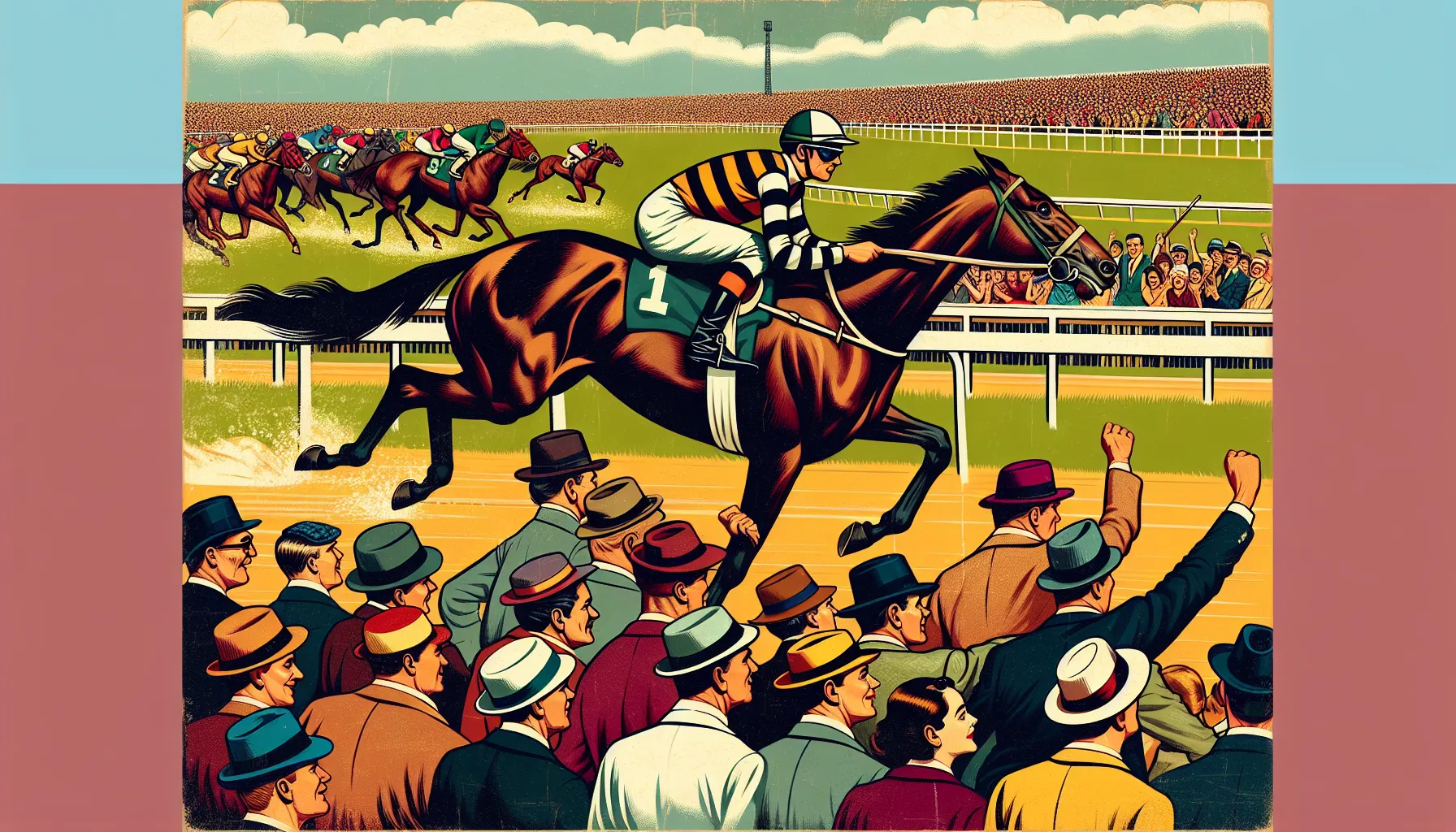If you’re new to horse racing, understanding odds might feel like deciphering a foreign language. One of the most common questions is, “What does 7 to 2 odds mean?” While it may seem confusing at first, once you grasp the basics, it’s easier than you think.
Odds like 7 to 2 represent the potential payout and the likelihood of a horse winning. They’re a key part of placing bets and can significantly impact your strategy. Knowing how to interpret these numbers not only enhances your betting experience but also boosts your confidence at the track.
Whether you’re a casual spectator or eager to dive into the betting world, decoding odds is essential. By the end of this, you’ll feel ready to make sense of those numbers and enjoy the thrill of horse racing with a better understanding.
Understanding Horse Racing Odds
Horse racing odds represent the likelihood of an outcome and the payout you receive if your bet wins. These odds are essential for evaluating potential rewards and risks in betting.
What Are Odds In Horse Racing?
Odds in horse racing show the probability of a horse winning, expressed as a ratio. For example, “7 to 2 odds” means that for every $2 you wager, you’ll earn $7 in profit if the horse wins, plus the return of your initial $2 bet. These ratios simplify comparing potential returns across different races or horses.
Odds also serve as indicators of perceived performance. Low odds like 3 to 1 imply a higher likelihood of success, while high odds like 50 to 1 suggest a long shot. Bookmakers set these odds based on factors such as a horse’s past performance, jockey skill, and overall competition in the race.
How Are Odds Calculated?
Odds are calculated by combining statistical data with betting market activity. First, bookmakers analyze variables like racing history, track conditions, and current form. They then assign probabilities to each horse accordingly.
Market-driven adjustments follow. Odds shift based on the volume of bets placed on specific horses. If many bets favor a single horse, its odds shorten to reflect increased chances. Conversely, lower betting interest leads to lengthened odds. This dynamic keeps payouts proportionate to demand and risk.
What Does 7 To 2 Odds Mean In Horse Racing?

7 to 2 odds in horse racing represent both the potential payout and the likelihood of a horse winning. These odds, expressed as a ratio, guide you in evaluating bets and understanding possible returns.
Explanation Of 7 To 2 Odds
7 to 2 odds mean you earn $7 in profit for every $2 you bet if your chosen horse wins. On a winning $2 wager, you receive $9 total ($7 profit plus your original $2). These odds reflect a medium risk, indicating the horse has a reasonable chance to win compared to others in the race but isn’t a heavy favorite.
Odds ratios like these help you assess potential returns and compare different betting options. Lower odds, such as 2 to 1, suggest a higher likelihood of success, while higher odds, such as 20 to 1, indicate a lower chance of winning.
How To Read And Interpret These Odds
To interpret 7 to 2 odds, focus on the ratio and your bet amount. For example, divide the first number (7) by the second number (2) to calculate the profit multiplier. Multiply your wager by this value to estimate your potential profit.
Understanding odds also helps you gauge perceived performance. A horse at 7 to 2 odds has moderate backing, meaning insiders and bettors expect it to perform well but not dominate the race. Combine odds with factors like recent form, jockey performance, and track conditions to make more informed decisions.
Calculating Winnings With 7 To 2 Odds

Understanding how to calculate your potential winnings with 7 to 2 odds helps you make informed betting decisions. These odds determine both your profit and the total return from successful wagers.
Examples Of Payouts
At 7 to 2 odds, the profit earned is $7 for every $2 wagered. If your bet wins, the profit adds to the initial stake, giving the total return. Here’s a table illustrating various payout examples:
| Amount Wagered ($) | Profit ($) | Total Return ($) |
|---|---|---|
| 2 | 7 | 9 |
| 10 | 35 | 45 |
| 20 | 70 | 90 |
| 50 | 175 | 225 |
For a $2 bet, your return is $9, combining your $7 profit with the original wager. A $10 bet yields a profit of $35, resulting in a $45 return.
Comparing 7 To 2 Odds With Other Odds
When compared to other odds, 7 to 2 implies a medium-risk, medium-reward scenario. Odds like 2 to 1 or 3 to 1 offer lower profits but suggest a higher likelihood of winning. Conversely, odds such as 10 to 1 or 20 to 1 provide larger payouts but represent lower probabilities of success.
For instance, 2 to 1 odds mean $2 profit per $1 wagered with a $3 total return, while 10 to 1 odds yield $10 profit per $1 wagered, for an $11 return. In the betting market, 7 to 2 odds strike a balance between risk and reward, often reflecting horses with credible but non-dominant chances of winning.
Importance Of Odds In Betting Strategies

Understanding odds is critical for crafting effective betting strategies in horse racing. Odds guide your decision-making by highlighting both the potential risk and reward of each wager.
Using Odds To Evaluate Risk And Reward
Odds like “7 to 2” serve as a benchmark for assessing the balance between risk and potential reward. These odds indicate that for every $2 staked, you earn $7 in profit if the bet wins, resulting in a total return of $9. Lower odds (e.g., 2 to 1) suggest higher probability but lower payouts, while higher odds (e.g., 10 to 1) imply increased payouts but reduced winning chances. By comparing odds across horses, you analyze the implied probability of success and determine which wagers offer optimal value based on your risk tolerance.
Tips For Betting On 7 To 2 Odds
- Assess Supporting Data: Combine odds with the horse’s performance metrics, such as recent race results or trainer success rates. A horse with 7 to 2 odds and consistent performance may provide a strong betting opportunity.
- Set A Staking Plan: Allocate your bet size proportionally to your bankroll and risk appetite. For instance, a moderate risk level aligns well with a consistent staking approach.
- Monitor Late Odds Movements: Significant changes in odds close to the race time might indicate shifts in market sentiment. For example, a drop from 7 to 2 to 3 to 2 can highlight increasing confidence in the horse.
- Explore Exotic Bets: Use 7 to 2 odds horses in combinations like exactas or trifectas to increase potential payouts, provided you understand the associated risks.
Leverage these strategies to make informed decisions while betting on medium-risk odds like 7 to 2.
Conclusion
Understanding 7 to 2 odds in horse racing equips you with valuable insights into potential payouts and the likelihood of success. These odds strike a balance between risk and reward, making them an appealing choice for many bettors. By combining your knowledge of odds with thorough research and a solid betting strategy, you can approach wagers with greater confidence and make more informed decisions. Whether you’re a seasoned bettor or just starting out, mastering odds like these enhances both your strategy and enjoyment of the sport.
Frequently Asked Questions
What do “7 to 2 odds” mean in horse racing?
“7 to 2 odds” indicate that for every $2 you bet, you earn $7 in profit if the horse wins. This means a winning $2 bet results in a total return of $9, which includes your initial wager. These odds represent a medium risk, suggesting the horse has a reasonable chance of winning.
How are horse racing odds like “7 to 2” calculated?
Odds are determined by bookmakers using statistical data, such as a horse’s past performance, track conditions, and jockey skill. They also adjust odds based on the amount of money wagered on each horse in the betting market.
Are 7 to 2 odds good for betting?
Yes, 7 to 2 odds are considered a balanced option. They provide a medium-risk, medium-reward scenario. These odds suggest the horse has a decent chance of winning while offering a reasonable payout for successful wagers.
How do I calculate winnings from a bet with 7 to 2 odds?
To calculate potential winnings, multiply your bet amount by 7 and divide by 2. For example, if you wager $10, you would earn $35 in profit ($10 x 7 ÷ 2). Add your initial bet to this for a total return of $45.
What is the difference between 7 to 2 odds and other odds?
Compared to lower odds like 2 to 1, 7 to 2 odds offer a higher payout but lower winning probability. Conversely, higher odds like 10 to 1 provide larger payouts but reflect a smaller chance of success. 7 to 2 odds balance risk and reward effectively.
How can I develop a betting strategy for 7 to 2 odds?
Assess supporting data, like the horse’s track record and conditions, before betting. Set a budgeted staking plan, monitor odds changes closer to race time, and consider diversifying your bets with exotic options for better-informed decisions.
Why do horse racing odds change before the race?
Odds are market-driven and shift based on the volume of bets placed on each horse. If many people bet on a specific horse, its odds will lower to reflect its increased perceived chances and balance the bookmaker’s risk.
Is it better to combine 7 to 2 odds with other performance factors?
Yes, combining odds with factors such as the horse’s previous performance, jockey experience, and track conditions increases your chances of making informed and successful bets. Odds alone do not guarantee a horse’s performance.
